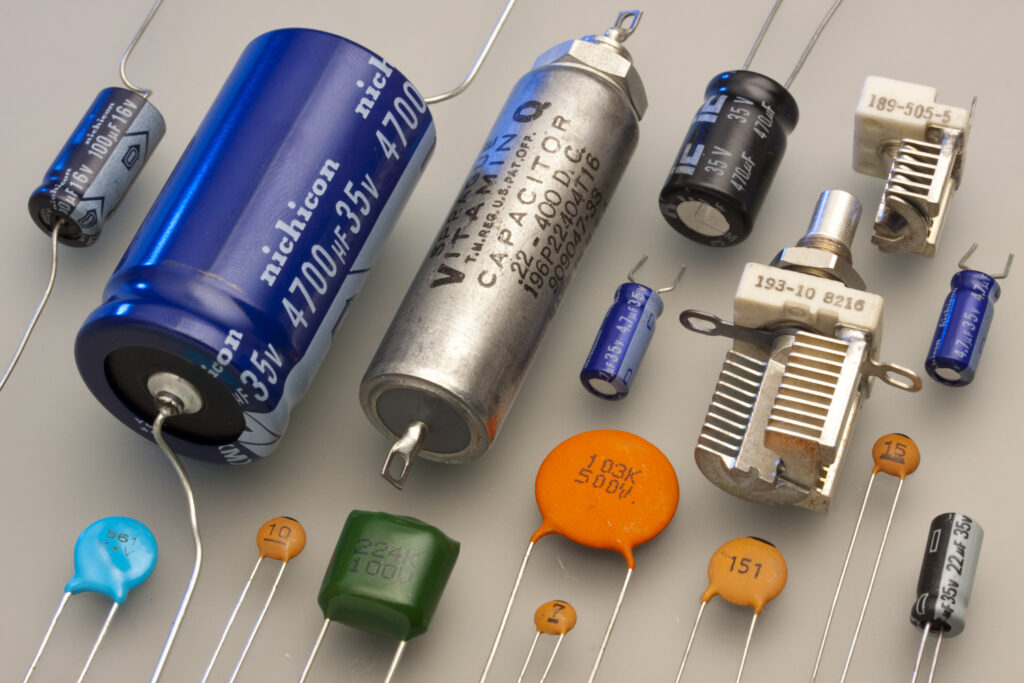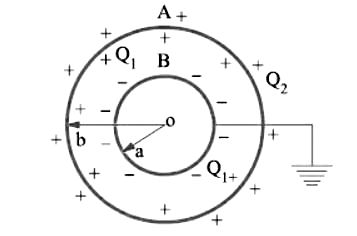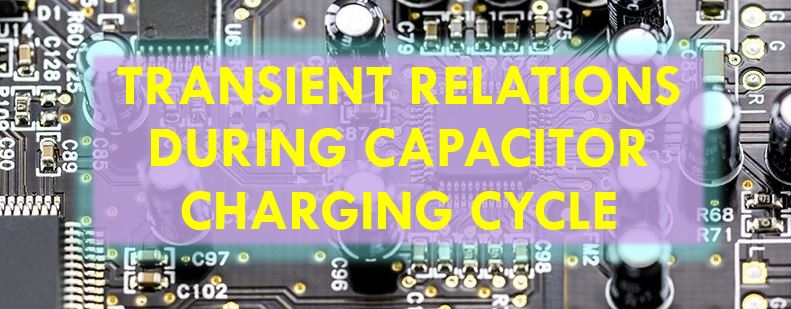Capacitor
A capacitor essentially consists of two conducting surfaces separated by a layer of an insulating medium called dielectric. The conducting surfaces may be in the form of either circular (or rectangular) plates or be of spherical or cylindrical shape. The purpose of a capacitor is to store electrical energy by electrostatic stress in the dielectric (the word ‘condenser’ is a misnomer since a capacitor does not ‘condense’ electricity as such, it merely stores it).

AdBlock-2
One plate is joined to the positive end of the supply and the other to the negative end or is earthed. It is experimentally found that in the presence of an earthed plate B, plate A is capable of withholding more charge than when B is not there. When such a capacitor is put across a battery, there is a momentary flow of electrons from A to B. As negatively-charged electrons are withdrawn from A, it becomes positive and as these electrons collect on B, it becomes negative. Hence, a p.d. is established between plates A and B. The transient flow of electrons gives rise to charging current. The strength of the charging current is maximum when the two plates are uncharged but it then decreases and finally ceases when p.d. across the plates becomes slowly and slowly equal and opposite to the battery e.m.f
Spherical Capacitor
(a) When outer sphere is earthed
Consider a spherical capacitor consisting of two concentric spheres of radii ‘a’ and ‘b’ meters as shown in Figure given below

Suppose, the inner sphere is given a charge of + Q coulombs. It will induce a charge of −Q coulombs on the inner surfaces which will go to earth. If the dielectric medium between the two spheres has a relative permittivity of εr, then the free surface potential of the inner sphere due to its own charge Q/4 π ε0 εr a volts. The potential of the inner sphere due to −Q charge on the outer sphere is − Q/4 π ε0 εr b (remembering that potential anywhere inside a sphere is the same as that its surface).
∴ Total potential difference between two surfaces is

(b) When inner sphere is earthed
Such a capacitor is shown in the figure given below.

If a charge of +Q coulombs is given to the outer sphere A, it will distribute itself over both its inner and outer surfaces. Some charge Q2 coulomb will remain on the outer surface of A because it is surrounded by earth all around. Also, some charge +Q1 coulombs will shift to its inner side because there is an earthed sphere B inside A.
Obviously, Q = Q1 + Q2
The inner charge +Q1 coulomb on A induces −Q1 coulomb on B but the other induced charge of +Q1 coulomb goes to earth.
Now, there are two capacitors connected in parallel :
(i) One capacitor consists of the inner surface of A and the outer surface of B. Its capacitance, as found earlier, is

(ii) The second capacitor consists of outer surfaces of B and earth. Its capacitance is C2 = 4 πε0b − if surrounding medium is air. Total capacitance C = C1 + C2.
Read article – Units of Resistivity
Visit NCERTplanet.com for NCERT solutions and Textbook downloads




